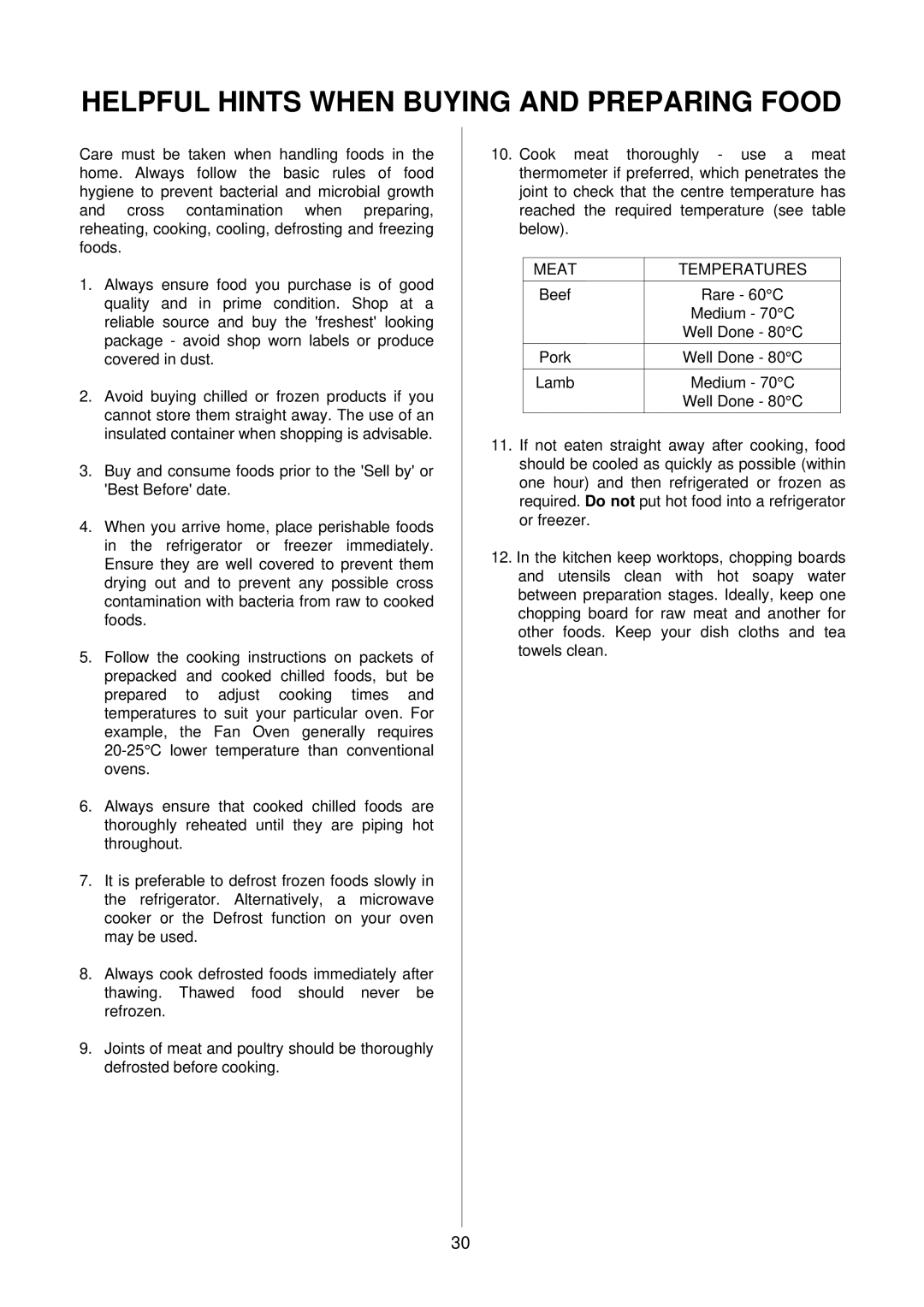
HELPFUL HINTS WHEN BUYING AND PREPARING FOOD
Care must be taken when handling foods in the home. Always follow the basic rules of food hygiene to prevent bacterial and microbial growth and cross contamination when preparing, reheating, cooking, cooling, defrosting and freezing foods.
1.Always ensure food you purchase is of good quality and in prime condition. Shop at a reliable source and buy the 'freshest' looking package - avoid shop worn labels or produce covered in dust.
2.Avoid buying chilled or frozen products if you cannot store them straight away. The use of an insulated container when shopping is advisable.
3.Buy and consume foods prior to the 'Sell by' or 'Best Before' date.
4.When you arrive home, place perishable foods in the refrigerator or freezer immediately. Ensure they are well covered to prevent them drying out and to prevent any possible cross contamination with bacteria from raw to cooked foods.
5.Follow the cooking instructions on packets of prepacked and cooked chilled foods, but be prepared to adjust cooking times and temperatures to suit your particular oven. For example, the Fan Oven generally requires
6.Always ensure that cooked chilled foods are thoroughly reheated until they are piping hot throughout.
7.It is preferable to defrost frozen foods slowly in the refrigerator. Alternatively, a microwave cooker or the Defrost function on your oven may be used.
8.Always cook defrosted foods immediately after thawing. Thawed food should never be refrozen.
9.Joints of meat and poultry should be thoroughly defrosted before cooking.
10.Cook meat thoroughly - use a meat thermometer if preferred, which penetrates the joint to check that the centre temperature has reached the required temperature (see table below).
MEAT | TEMPERATURES |
|
|
Beef | Rare - 60°C |
| Medium - 70°C |
| Well Done - 80°C |
|
|
Pork | Well Done - 80°C |
|
|
Lamb | Medium - 70°C |
| Well Done - 80°C |
|
|
11.If not eaten straight away after cooking, food should be cooled as quickly as possible (within one hour) and then refrigerated or frozen as required. Do not put hot food into a refrigerator or freezer.
12.In the kitchen keep worktops, chopping boards and utensils clean with hot soapy water between preparation stages. Ideally, keep one chopping board for raw meat and another for other foods. Keep your dish cloths and tea towels clean.
30
